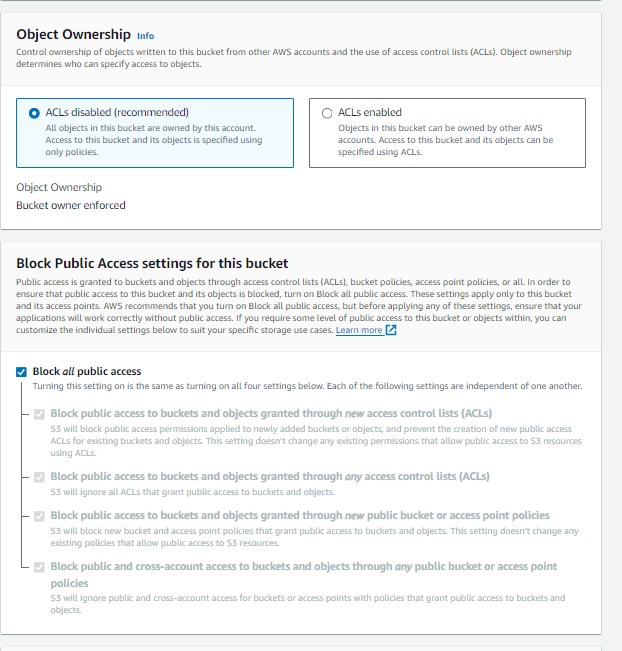2.3 Introduction to AWS S3 Dashboard
Overview
Amazon Simple Storage Service (Amazon S3) is an object storage service offering industry-leading scalability, data availability, security, and performance. Organizations of all sizes and industries can use it to store and protect any amount of data for a range of use cases, such as data lakes, websites, mobile applications, backup and restore, archive, enterprise applications, IoT devices, and big data analytics.

The Amazon S3 Dashboard is your central hub for managing and monitoring your S3 resources. This guide provides an introduction to the key features and functionalities of the S3 Dashboard on the AWS Management Console.
Key Features
- Bucket Management:
- Create New Buckets: Easily create new buckets to store your data.
- Configure Bucket Settings: Set up versioning, enable logging, manage lifecycle policies, and configure other settings to optimize your buckets.

- Data Upload and Management:
- Upload Files: Upload files and folders directly through the dashboard.
- Manage Objects: Browse, search, and manage your objects with ease.
- Security and Access Control:
- Bucket Policies and ACLs: Control access to your buckets and objects using bucket policies and Access Control Lists (ACLs).
- Encryption Settings: Set default encryption on buckets to protect your data at rest.

- Monitoring and Analytics:
- Storage Metrics and Usage: Track your storage usage, analyze trends, and monitor the operational performance of your resources.
- Access Logs: Enable logging to keep track of requests and accesses to your buckets.
- Performance Optimization:
- Transfer Acceleration: Accelerate your data transfer speeds to and from the S3 buckets.
- Requester Pays: Enable this feature to have requesters pay for their own data transfer and request costs.
- Data Protection and Compliance:
- Object Lock: Protect objects from deletion with S3 Object Lock.
- Versioning: Maintain multiple versions of an object for easy recovery and archiving.
- Cost Management:
- Lifecycle Policies: Automatically transition objects to less expensive storage classes or archive them to reduce costs.
- Bucket Cost Analysis: Get insights into your storage costs and optimize spend.
Getting Started
To start using the Amazon S3 Dashboard, simply log in to your AWS Management Console and navigate to the S3 service. The intuitive interface and in-depth documentation guide you through the process of creating and managing your storage resources effectively.
Conclusion
Amazon S3 offers a robust and user-friendly platform for all your storage needs. The S3 Dashboard on the AWS Management Console provides a comprehensive suite of tools to efficiently manage your data, optimize costs, and enhance security. Whether you’re storing small amounts of data or scaling to exabytes, the S3 Dashboard is designed to simplify storage management and help you harness the full power of Amazon S3.
